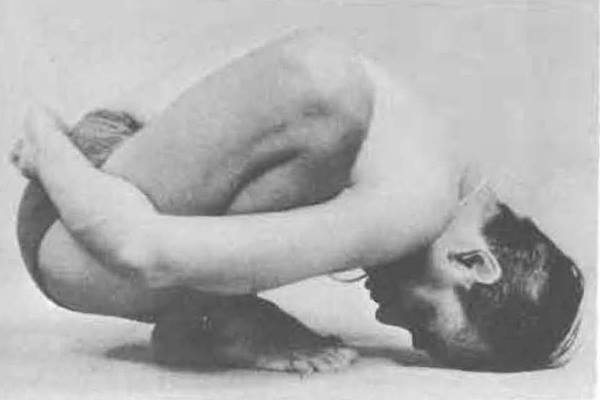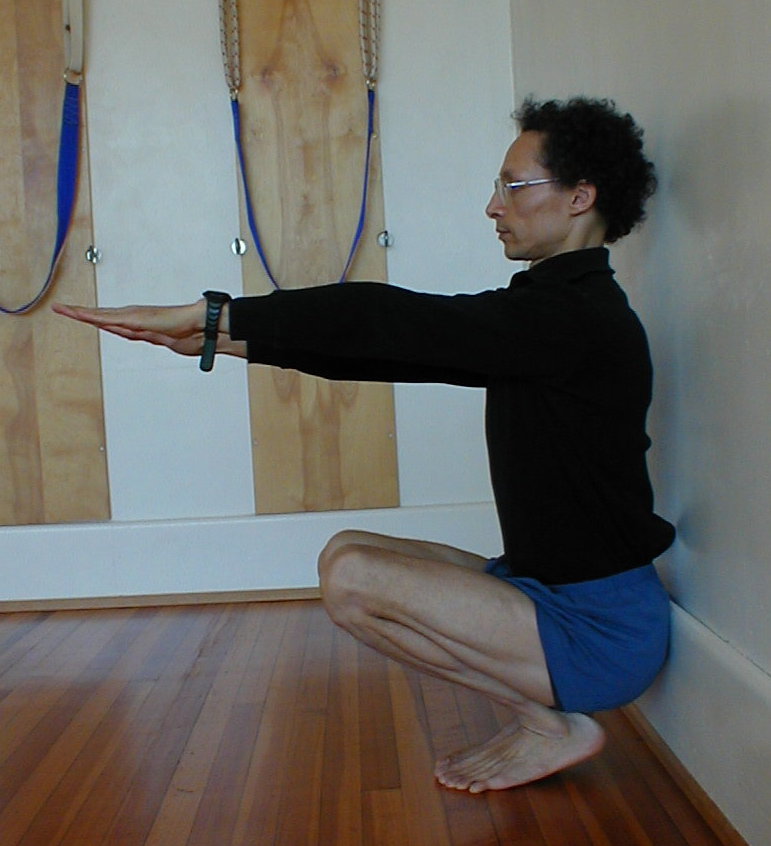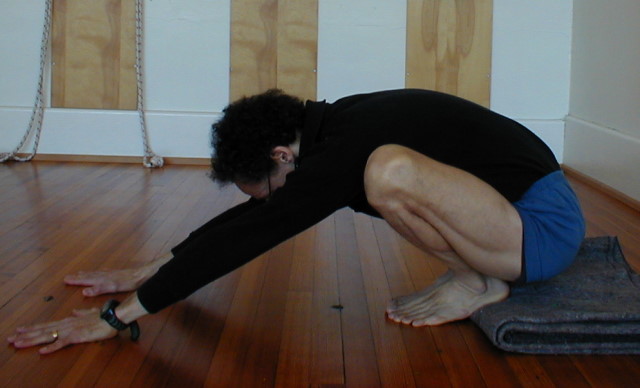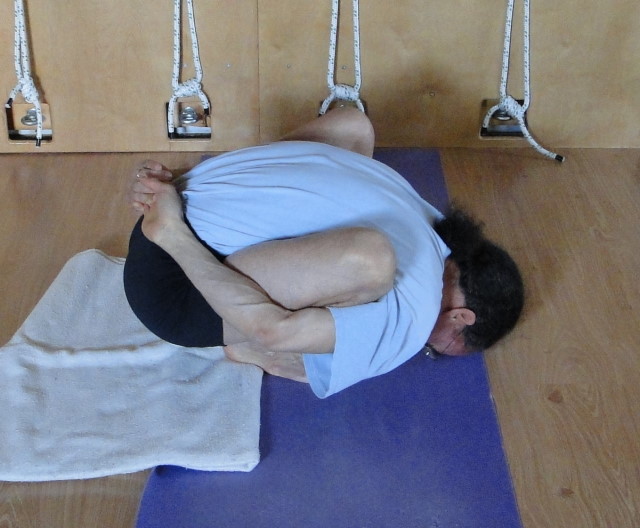Malasana (Garland Pose)
Benefits
|
Malasana will benefit your body and mind in many ways. Through this pose you will stretch the ankles, groins and back torso. Also you will be able to tone your belly and make your abdominal muscles stronger. Malasana is a great pose to open up the hips, to lengthen the groins, and bring mobility in the lumbar region of the spine. The primary benefit to the mind of Malasana is the quietude it fosters. |
 |
First Stage
|
Stand with feet joined, a few inches from the wall. Bend the knees and take the hands to the floor, keeping the knees and feet together. Roll the front thighs in. Rest your sacrum against the wall but not your lower or upper back. Lift front ribs and sternum, and stretch the arms forward while you draw the arms bones back into their sockets. Press the heels down without collapsing the arches, and draw the outer thighs towards the hips. To tone the abdomen in this stage, coordinate the following actions: press the heels down while moving the calves towards shins; lift the abdomen at the same time. Earlier stage/alternative – hold the lower wall ropes while doing the first stage of the pose.
|
 |
Second Stage
|
Stand on a rolled up mat or a folded blanket, with feet together in Tadasana. Bend the knees and take your hands to the floor for balance, then with hips moving towards heels, extend your arms forward. Turn the arms out and draw outer arms back into shoulders so the chest can lift more easily. Press the heels down into blanket, roll the front thighs in and take outer thighs into hips. Take the abdomen in and up as you lift your chest. Coordinate the lift of abdomen with action of pressing calves toward shins to deepen the toning of abdomen.
|
 |
Third Stage
|
From stage two, bend your knees out to the side while pressing down through the inner heel and ball of the foot. Reach your arms and trunk forward in between your knees. Hold the sides of the sticky mat and extend your chest forward. Then bend your elbows and place the back of your upper arm against the top of your shins and use the pressure of the arms against the shins for leverage to lengthen your spine and extend your chest further forward. Keep the inner heels pressing down and front ankles moving back to counter the forward motion of your chest. Once you have elongated your spine, turn your upper arms inward and take your hands to the back of your ankles, wrap your palms around the back of your heels. Pull on the back of your heels to get your arms more tightly intertwined around the outside of your legs. Take your head toward the floor, or rest it on a block or blanket if it does not reach the floor. |
Fourth and Final Stage
|
From third stage, release your heels and place the back of
your hands on the small of your back and gradually work your hands closer to
each other until you can clasp the hands together. If you are unable to clasp
your hands, use a strap to connect the hands behind the back. Use your clasped
hands for leverage to fully extend your chest forward and take your head down
to the floor. If you are unable to reach the floor with your head, use a block
or blanket so the top of your head is supported. |
 |
In the Pose
Relax your abdomen, take your attention inside and practice Pratyahara (withdrawal of your mind from the external senses) and the quietude it brings. The natural inward-turning quality of this pose requires a subtle letting go (once you have clasped either the heels or the hands behind the back and the head is resting) without letting go of the actions that maintain stability in the pose. Let go of striving and receive the support from the floor (in your feet and forehead) and the clasped hands. Your awareness may then spread evenly throughout the body, bringing a collected calmness and quietude.
Sit in Dandasana (Staff Pose) for a few moments to lengthen the spine after coming out of Malasana.
Practice Notes
Malasana is excellent preparation for deep forward bends such as Kurmasana, and arm balances that require deep hip flexion (such as Bakasana). Malasana also reduces mental agitation and collects a scattered mind.
Contraindications and Cautions
Malasana requires complete knee flexion and simultaneous hip abduction, so care must be taken to support the backs of knees with a blanket if there are knee problems. Seek guidance from a qualified teacher if you have knee problems before doing this pose (at any stage). The final stage requires significant elongation in the lumbar spine and proper preparation for Malasana is needed (such as the preliminary stages, along with poses such as Uttanasana, Adho Mukha Svanasana, Upavista Konasana, Baddha Konasana, Maricyasana I).


